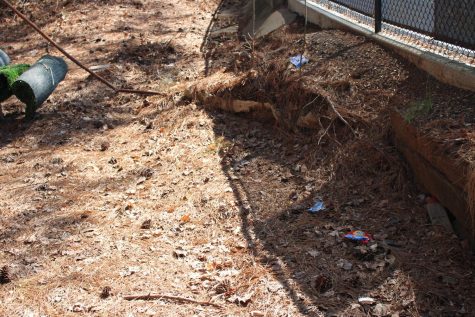Bettering the Earth
Earth remains the only known planet that can sustain human life. Despite this knowledge, humans continue to treat the earth as if they own it. Making sure humans do not corrupt the Earth should concern all. Taking care of the environment while maintaining natural resources can prevail as well as help future generations.
March 11, 2022
Approximately 340 students drive to school every day at NC. Out of those 340 students, numerous fail to acknowledge the amount of carbon they let into Earth’s atmosphere. A regular passenger vehicle produces around 4.6 metric tons of carbon dioxide per year. Anthropogenic problems continuously put Earth’s environment at risk as well as depleting all of the natural resources, compromising generations to come.
Every three to seven years, climate change happens naturally. Before human existence, planet Earth went through warming and cooling stages. With the combination of pollution and greenhouse gasses, humans continue to speed up the time frame of climate change leading to global warming. This remains an ongoing problem because the more humans heat up the earth, the more damage humans cause to the environment. Global warming includes the process of humans excessively warming up Earth’s climate. The warmer the earth gets, the faster ice caps start to melt, destroying arctic habitats.
From deforestation to coral bleaching, humans constantly destroy animal habitats. Home to dozens of marine organisms, coral reefs remain the most biodiverse ecosystem throughout the whole planet. Slowly becoming endangered, coral reefs support a lot of wildlife. This ongoing problem has remained consistent since 1983. As the problem progresses, it puts marine organisms such as algae out of a home. Humans also tend to dump all of their waste into oceans causing marine wildlife extreme danger.
“A lot of humans seem to treat the environment like [it’s] theirs. The environment is really used to support all life so polluting it and depleting our resources damages ecosystems. We need to learn how to use our resources sustainably,” environmental science teacher Alexandra Adams said.
When humans pollute the air, a molecule called chlorofluorocarbons (CFCs) arises and becomes released into the atmosphere. CFCs emerge due to the combination of chlorine, fluorine, and carbon. When released into the atmosphere, the warmth Earth receives from the sun releases into the atmosphere and becomes trapped causing the Earth to heat up. The trapped heat also destroys Earth’s ozone layer, creating holes within it. While others think climate change can have short-term benefits, all of the negative impacts can become permanent. This negatively affects the Earth because this can cause the sun’s harmful UV rays to reach humans and any living organism on Earth.

As the production of carbon can affect Earth, it may also affect human health. Eventually, the trapped heat will turn into smog, a dirty fog that clouds the atmosphere. If smog enters a human’s respiratory system it can cause diseases such as lung cancer, emphysema, asthma and chronic obstructive pulmonary disease (COPD). Keeping the atmosphere clean should not only be a necessity for the planet’s health, but it can also help prevent problems regarding human health.
When the sun’s light shines among the plants it helps plants achieve photosynthesis, which helps them produce their own food. The sun also releases carbon upon the plants. Grasses and flowers push the carbon underground trapping it so it can not harm the Earth. When humans mine into the earth’s crust, they release more carbon within the atmosphere causing it to stay trapped in the ozone layer and heat up the planet. Most of society remains hesitant to adapt to eco-friendly behaviors because humans have been living like this for a long time. Drastically changing habits may become difficult for humans.
Although a multitude of factors destroys the environment, humans can do numerous things to help the current situation of the environmental issues within Earth. Earth needs a lot of miniature solutions to help fix the humongous complications that continuously affect the environment. These solutions include planting or growing more trees and plants, increasing wind and solar power and increasing the use of renewable energy.
“Reducing carbon emissions is the best thing we can do to help the environment recover from climate change. Younger generations are the future, while it’s kinda unfortunate younger generations are in a problem that’s kinda too late to be solved, it’s important that you know what can be done and that it’s not completely hopeless so we are able to get these carbon emissions under control. This planet is our only home and it’s important that we take care of it,” Adams said.
It remains mandatory that humans try hard to upkeep the conditions of the environment. Scientists did not find another planet that can sustain human life. Since humans can only live on Earth, taking care of it should remain a top priority so future generations do not worry about the same environmental problems humans deal with currently.








